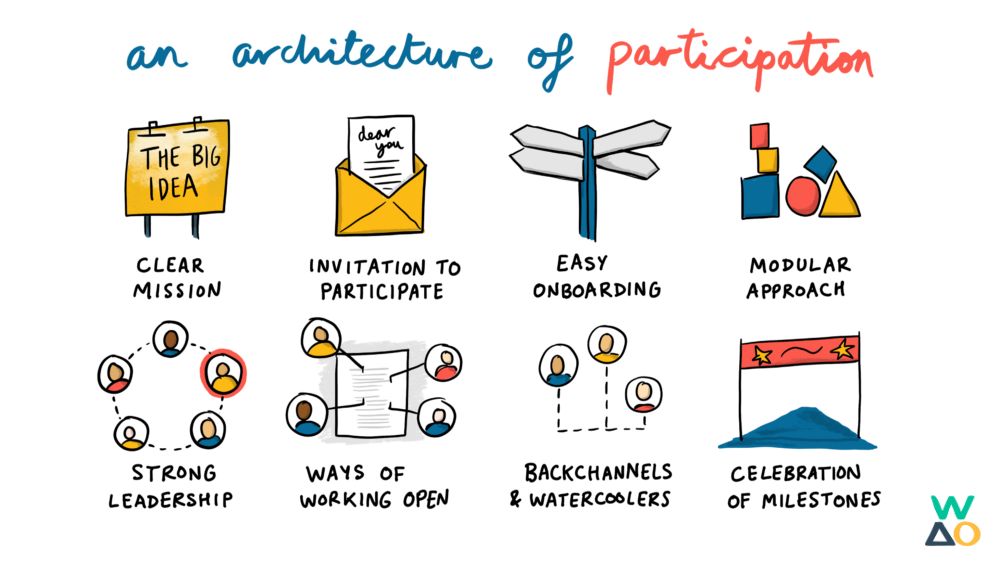The term ‘architecture of participation’ comes from a 2004 article by Tim O’Reilly in which he stated:
WAO member Doug Belshaw documented a useful framework of 8 steps to help people cover all their bases when thinking about volunteering, contributing and facilitating communities. Since then, we’ve used this framework with a variety of organisations.

The process
As every project and organisation is different, applying the AoP framework is a contextual process. We start by having a looking at whose attention you are looking to scaffold and the systems you already have in place. Then we combine our experience with the framework and make suggestions on how to use what you’ve got to increase stakeholder engagement.
Our creds
We’ve used this framework with Greenpeace, Mozilla, Red Hat, Catalyst, NEAR and likely elsewhere too. It’s just super useful. Read how we’ve applied it:
- HOWTO: Create an Architecture of Participation for your Open Source project
- HOWTO: Create an Architecture of Participation for your Charity tech project
- Cultivating Community with Red Hat

